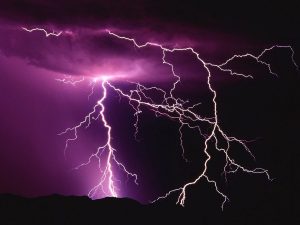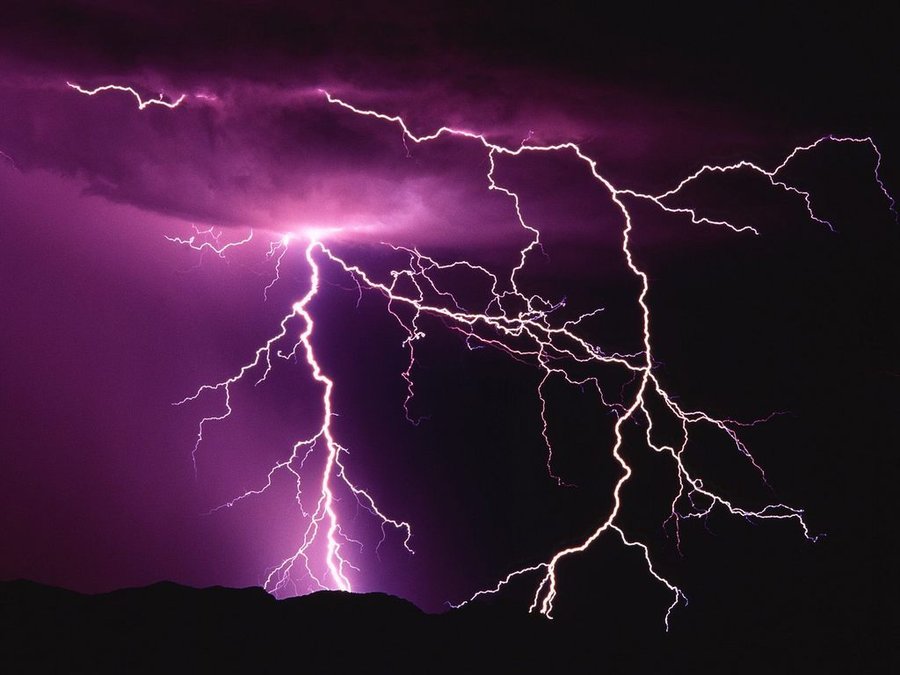
BS”D
Volume 32, No. 5
22 Marcheshvan 5778
November 11, 2017
Sponsored by
the Parness family
in memory of Max Parness a”h
Mrs. Rochelle Dimont and family
on the yahrzeits of
grandmother and great-grandmother
Chaya Sarah Tarshish a”h,
mother-in-law and grandmother
Chana Dimont a”h,
and father and grandfather
Rabbi Elazar Tarshish Halevi a”h
Most of this week’s parashah is devoted to Eliezer’s journey to find a wife for Yitzchak. The Midrash Rabbah quotes the verse (Yeshayah 50:10), “Who among you fears Hashem, listening to the voice of His servant? Though he may have walked in darkness with no light for himself, let him trust in the Name of Hashem, and lean upon his Elokim.” The Midrash comments: “Who among you fears Hashem”–this refers to Eliezer. “Listening to the voice of His servant”–Eliezer listened to Avraham, G-d’s servant. “Though he may have walked in darkness”–when he went to bring Rivka. “With no light for himself”–but Hashem lit the way with bolts of lightning. “Let him trust in the Name of Hashem, and lean upon his Elokim”–therefore he said (Bereishit 24:12), “Hashem, Elokim of my master Avraham, may You so arrange it for me this day.” [Until here from the Midrash]
R’ David Cohen z”l (1887-1972; instructor at Yeshivat Merkaz Ha’Rav; known as the “Nazir”) asks: Where does the Torah say that Eliezer traveled in the dark or during a lightning storm? He explains:
There is a dispute between the early halachic authorities, Rambam z”l and Ra’avad z”l, whether Eliezer’s reliance on a sign–whether the girl would offer to give water to Eliezer’s camels–was halachically proper or was improper (as it would be improper for a person to cancel a journey because a black cat crossed his path). However, writes R’ Cohen, this Midrash is teaching that Eliezer actually placed his trust in Hashem, and the “sign” which he set up was intended as no more than a momentary flash of light, a bolt of lightning in an otherwise pitch black “night,” to give him comfort that he was on the right path.
Indeed, R’ Cohen writes, shidduchim / dating is always like that. Every couple is in the dark about what to look for and whether they are meant for each other. From time-to-time, a “bolt of lightning” will light the darkness to show the parties that they are on the right path. Still, in the final analysis, one must rely on Hashem. (Zachu Shechinah Beineihem p.89)
********
“It shall be the maiden to whom I say, ‘Please tip over your jug so I may drink,’ and who replies, ‘Drink, and I will even water your camels,’ — she is the one You will have proven is for Your servant, for Yitzchak . . .’” (24:14)
R’ Yosef Yozel Horowitz z”l (1847-1919; the Alter of Novardok) asks: Why was giving Eliezer and his camels water proof that Rivka was suitable for Yitzchak? Maybe she did it because she was embarrassed to refuse or in order to obtain honor. Moreover, even if she did it as a genuine Chessed, why would the fact that she had one good trait “prove” she was suitable for Yitzchak?
The Alter explains: Whether someone is a person who works on perfecting himself or is not such a person can be discerned from how he carries out a task that is requested of him. Someone who works on himself will not be satisfied with the bare minimum; he or she will always want to complete the task to the greatest extent possible.
Here, the Alter notes, Eliezer requested (24:17), “Let me sip, if you please, a little water from your jug.” “Sip,” implies a small drink. “From your jug,” implies, “Don’t go out of your way for me.” Rivka, however, was not satisfied with doing a small favor. She wanted to do a complete Chessed.
In addition, the Alter writes, Rivka’s Middah of Chessed was an indication of her character as a whole because Middot / character traits do not operate in isolation. A person’s traits influence each other. When someone works on improving one trait, his other traits improve through a chain reaction. On the other hand, if a person allows one of his traits to deteriorate, his other traits will follow in a downward spiral.
This lesson has a practical application, the Alter notes. Sometimes a person sees himself as needing improvement in so many areas that he doesn’t know where to start. As a result, he does nothing to improve himself. The answer to this dilemma is that it doesn’t matter which trait a person starts with. Improving in any one area is bound to have a positive spill-over effect. (Madregat Ha’adam: Berur Ha’middot ch.5)
********
“The maiden ran and told her mother’s household things (literally, ‘words’) such as these.” (24:28)
R’ Raphael Moshe Luria z”l (Rosh Yeshiva in several chassidic yeshivot in Israel; died 2009) writes: Seemingly, the verse should say, “The maiden ran and told her mother’s household these things,” i.e., Rivka told about meeting Eliezer and receiving gifts. However, the verse is teaching that Rivka said words similar to Eliezer’s. He said (verse 27), “Blessed is Hashem, Elokim of my master Avaham, Who has not withheld His kindness and truth from my master,” and Rivka, too, gave thanks. (Bet Genazi: Nisuin p.5)
********
“Lavan and Betuel answered and said, ‘The matter originated from Hashem! We can say to you neither bad nor good’.” (24:50)
R’ Yitzchak ben Yosef z”l (13th-14th century; Spain) writes: Even though it was against Lavan’s nature to do so, he and his father recognized the “coincidence” that happened to Eliezer as a great miracle. Therefore they said, “The matter originated from Hashem,” thinking that the design of the test for Rivka came to Eliezer through prophecy.
R’ Yitzchak adds: The Torah describes in minute detail how Eliezer related the entire episode to Rivka’s family to emphasize that Eliezer did not exaggerate, nor did he withhold any information (except for two minor details that he changed for specific reasons). And, with no need for any hyperbole, Lavan and Betuel recognized the miracle for what it was. (Peirush R’ Yitzchak ben R’ Yosef Al Ha’Torah)
R’ David Holzer shlita (Miami Beach, Fl.; publisher of the work quoted above) asks: How did Eliezer succeed in convincing two non-believers that what occurred was miraculous? He answers: Eliezer did two things. First, he said (verse 33), “I will not eat until I have spoken my piece.” This indicated to Lavan and Betuel that something so incredible had happened to Eliezer that he had lost interest in any pleasure other than re-telling his story. Second, he began his story by saying (verse 34), “I am Avraham’s slave.” This showed that he sought no personal glory from telling his story.
R’ Holzer adds: This explains the structure of the Pesach seder. We read the haggadah before the meal to impress upon our children how incredible the story of the Exodus is. Also, we begin with our “disgrace” (“Originally, our ancestors were idolators”) to emphasize that the glory in the story of the Exodus is not ours, but Hashem’s alone. (Va’yosef David)
********
“Yitzchak went out to pray in the field towards evening.” (24:63)
Our Sages say that Yitzchak established the Minchah prayer. However, our Sages also say that Avraham Avinu observed the entire Torah, even the Mitzvot that are of Rabbinic origin. Why didn’t he recite Minchah?
R’ Maimon z”l (12th century; father of Rambam z”l) explains that all of the Patriarchs recited all of the prayers. However, every Tzaddik makes certain Mitzvot central to his unique way of serving Hashem. Of course, a Tzaddik observes all of the Mitzvot, but he puts special effort into one or a few Mitzvot more than others. Thus, Avraham put special effort into reciting Shacharit; Yitzchak put special effort into reciting Minchah; and Yaakov put special effort into reciting Ma’ariv. (Iggeret Ha’nechamah)
********
A Torah Tour of the Holy Land
“Sarah died in Kiryat Arba which is Chevron. . .” (23:2)
R’ Moshe Wolfson shlita (mashgiach ruchani in Yeshiva Torah Vodaas in Brooklyn, N.Y.) quotes kabbalists who write that our prayers ascend to Heaven through Chevron. In addition, the Zohar writes that the Cave of Machpelah is so called because it is the “double” of Yerushalayim. What does this mean? If, in fact, our prayers ascend to Heaven through Chevron, why do we not face toward that city when we pray?
R’ Wolfson explains: The holiness of both Yerushalayim and Chevron finds expression in relation to the Patriarchs. Har Ha’moriah in Yerushalayim is where each of the Patriarchs prayed at a critical point in his life. Chevron is where each of the Patriarchs is buried. The difference between them is that, in Yerushalayim, each of the Patriarchs acted in the open, whereas, in Chevron, each of the Patriarchs is hidden. Thus, Yerushalayim represents our “open” relationship with Hashem–therefore, the Bet Hamikdash, with its glorious revelation of the Shechinah, was there. Chevron, on the other hand, represents the concealed aspect of our relationship with G-d. Even when the Bet Hamikdash does not exist and Hashem is hidden, our relationship lives on because we are descendants of the Patriarchs who are “hidden” in Chevron. Likewise, our Matriarch Leah is buried in Chevron, for, compared to Rachel, she is represents (in kabbalah) the hidden worlds [as demonstrated, for example, by the fact that she had to marry Yaakov in an indirect manner].
Our Sages teach that the three daily prayers were instituted by the Patriarchs. Thus, when we pray, we are in a sense praying with them. On an open level, we pray toward Yerushalayim, where the Patriarchs also prayed. However, when the Bet Hamikdash lies in ruins, our prayers ascend through Chevron, i.e., through our connection to the Patriarchs that can never be severed. But, we do not physically face toward Chevron, for Chevron represents a hidden connection, not an open connection to which one can point. Interestingly, the word “Chevron” shares a root with “chibur” / “connection.” (Zion Ve’arehah p.82)


